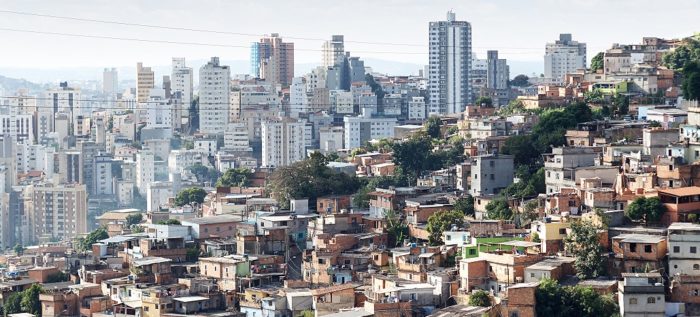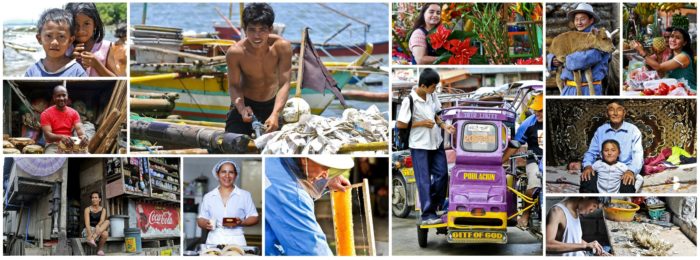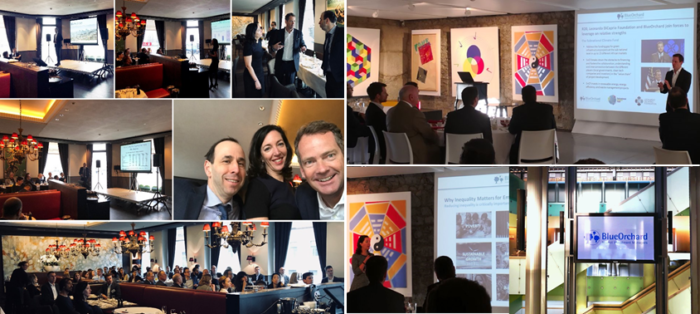Professor Straumann explained that the sustainable economic growth witnessed in Western countries results from specific historical, socio-economic and political conditions particular to these countries which favored their development. These prerequisites for development include high density of population, political stability, established trade systems, high levels of education, scientific discoveries, regulations, and innovative technologies. As these factors are country or region specific, it would take a long time to implement them in countries where they do not exist. Hence, it will take years for developing countries to catch up and for the inequality gap between rich and poor countries to narrow.
Another important point highlighted by Professor Straumann was the alarming new divergence that is appearing between developing countries. Although some countries have shown encouraging signs of progress, others continue to stagnate. For example, some countries in East and South Asia have been able to catch up with Western countries due to their bureaucratic traditions and the density of their population, whereas many African and Central Asian countries lack these conditions and have difficulties catching up at the same speed.

Consequences of Inequality
In recent years, many developing countries have made great progress in terms of development but their economic growth was often accompanied by an increase in inequality within and between these countries. Rising inequality can undermine poverty reduction, increase social unrest and weaken social cohesion. This in turn negatively impacts the economic growth of a country. As inequality hinders sustainable development and the eradication of poverty, it constitutes an obstacle to the achievement of the 17 Sustainable Development Goals (SDGs) adopted by the United Nations in 2015. These goals were adopted in an attempt to end poverty, protect the planet and ensure prosperity for all by 2030. According to the UN, achieving the SDGs will take between US$5 to $7 trillion, with an investment gap in developing countries of about $2.5 trillion. As explained by Maria Teresa Zappia, our Chief Investment Officer, creating access to financing opportunities in poor and vulnerable countries is the key to promote sustainable development and reduce inequality. However, as foreign and domestic public funds are not sufficient to close the investment gap, private capital investments are pivotal to improve the situation.

Impact Investing, an effective tool to close the gap
One positive feature of Impact Investing is its power to mobilize and channel investment capital to areas and regions most in need and to invest in companies, organizations, and funds with the intention to generate social and environmental impact alongside financial returns. On these grounds, Impact Investing represents an effective tool which can contribute to closing the investment gap in developing countries and promote sustainable development. To illustrate how Impact Investing works, Maria Teresa presented the example of the BlueOrchard managed Microfinance Growth Fund (MiGroF). MiGroF started operations in 2010, at a time when Latin and Central American countries were struggling with the aftermaths of the 2008 global financial crisis. MiGroF was created to support the provision of microfinance services in Latin America and the Caribbean via debt financing. Successfully closed in 2017, MiGroF made a significant contribution to the supply of finance and the expansion of credit to micro-, small- and medium-sized enterprises in the Latin and Central American region from 2010 to 2017. At its peak, the Fund provided financing to 43 microfinance institutions in 13 countries, reaching out to mostly female and rural clients. With the example of Maria Alejandra, a Nicaraguan micro-entrepreneur, Maria Teresa demonstrated how MiGroF contributed to improving the lives of the poorest share of the population in a country like Nicaragua. The Nicaraguan microfinance institution Pro Mujer, which had obtained funding from MiGroF, supported Maria Alejandra in her desire to start her own business. The single mother of three received a loan, benefited from business trainings and health issue prevention. This enabled Maria Alejandra to start her own hardware store and provide for her three children while taking care of her health. Maria Alejandra is just one example out of 400,000 the micro-entrepreneurs reached by MiGroF. The comparison of the 2009 and 2016 key development indicators for Nicaragua, demonstrates that the country’s overall situation has clearly improved during this time frame and with thousands of stories like Maria Alejandra’s, MiGroF can claim a little share in this success. The social impact enabled by MiGroF is another key milestone in BlueOrchard’s continued effort to contribute to the SDGs and foster sustainable and inclusive growth.
MiGroF demonstrates only one of the many ways in which Impact Investing can benefit society. As highlighted by Maria Teresa, BlueOrchard’s funds currently address directly 13 out of the 17 SDGs. Each fund managed by BlueOrchard was created to achieve a specific purpose such as job creation, education, women’s empowerment, adaption to climate change, climate protection, affordable housing, and healthcare to name a few. Despite the increased international commitment to sustainable investing as well as to the SDGs, the need for private capital is still considerable. Against this backdrop, Maria Teresa concluded that BlueOrchard will keep identifying innovative and tailored solutions to address pressing societal and environmental challenges.
written by Alicia Boissonnas, Marketing and Communications Intern at BlueOrchard
